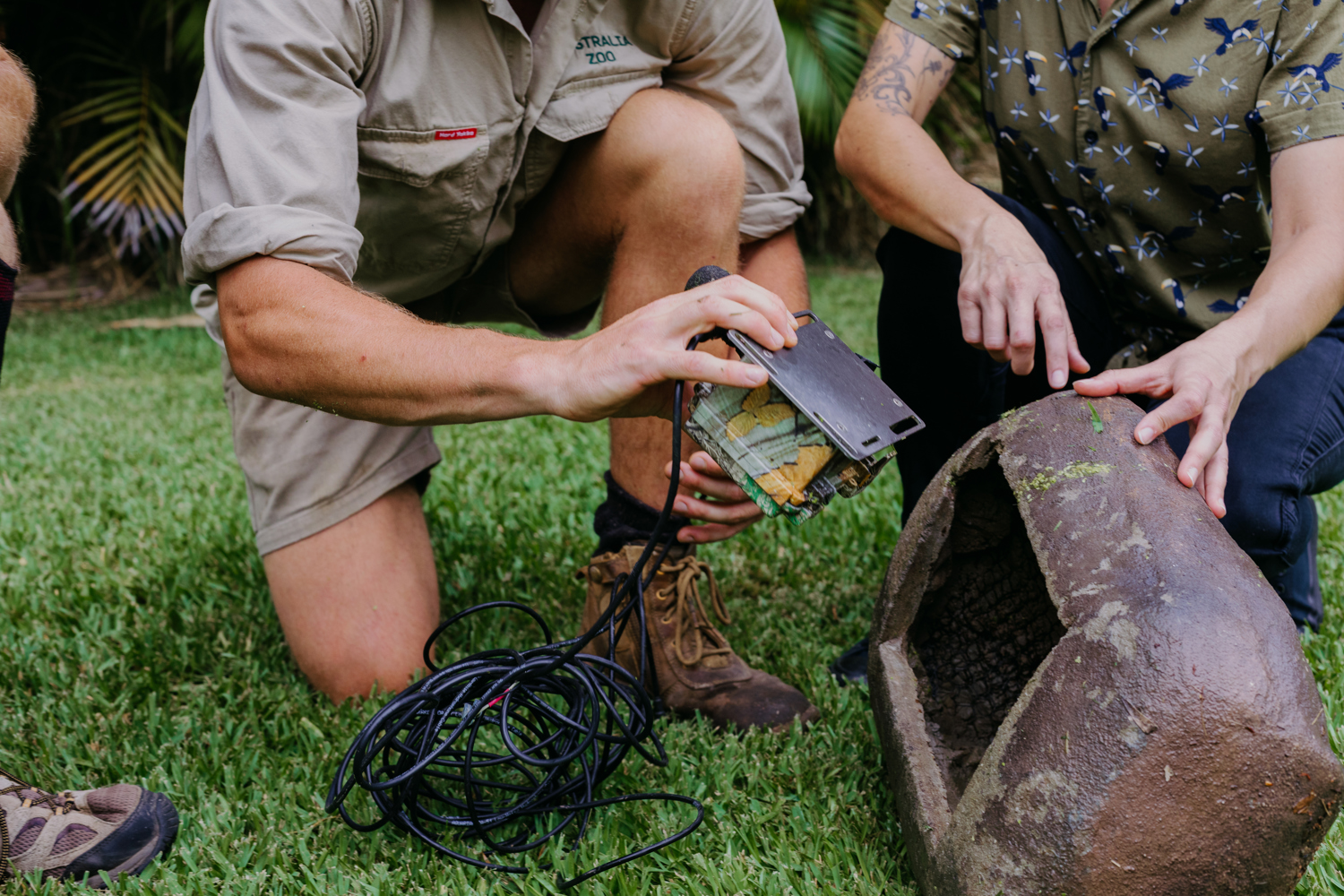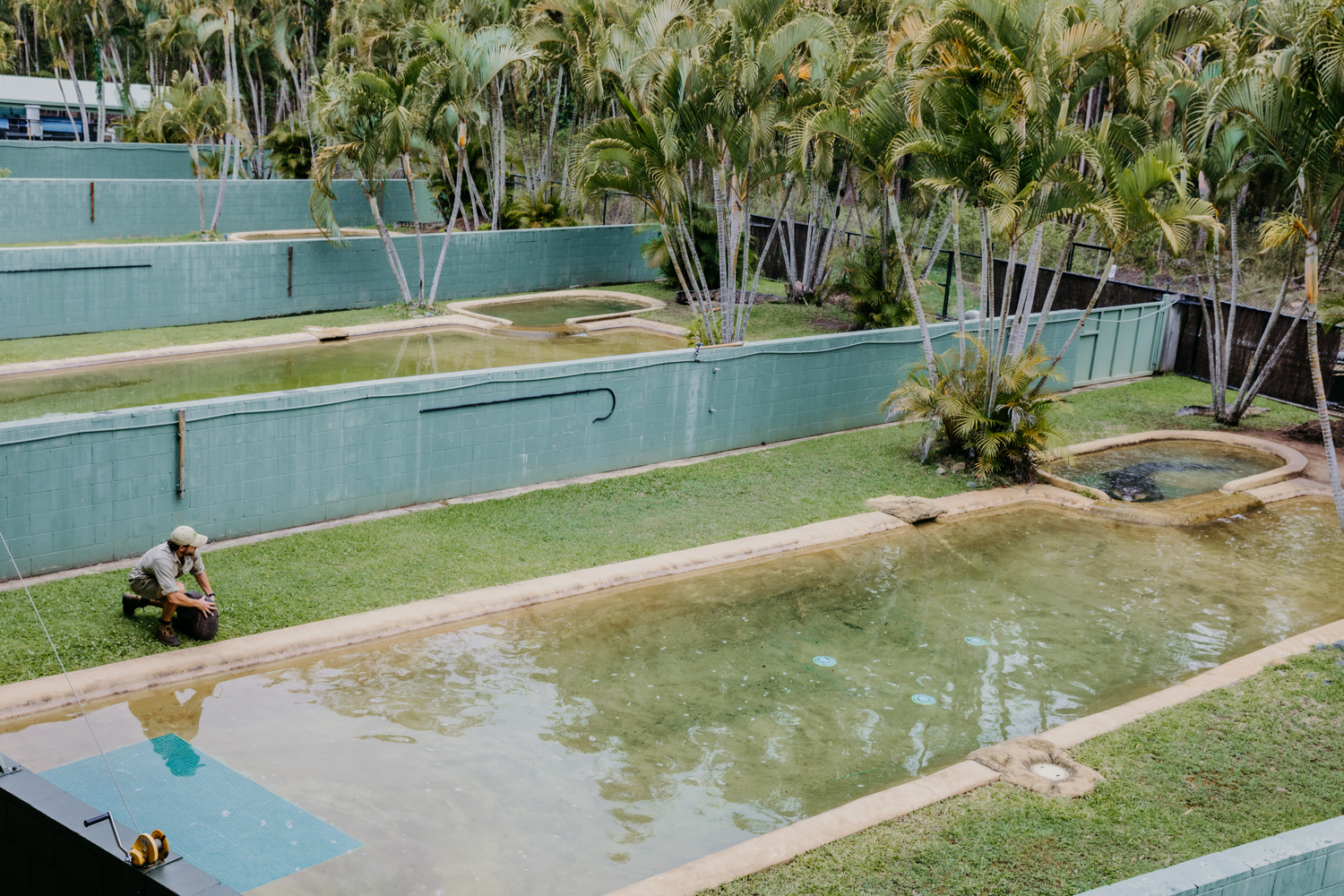Forget flowers and fancy dinners – it’s blowing bubbles and hissing that sends saltwater crocodiles head-over-heels according to research from the University of the Sunshine Coast.
Using video and acoustic recording equipment installed in Australia Zoo’s crocodile habitats, UniSC honours student Sonnie Flores has been collecting the ‘love language’ of Australia’s apex predators.
"Narial geysering (spouting water from the nose), narial hissing, bubble-blowing… these are some of the things males primarily do to females,” Ms Flores said. “And the females just love it!
“There’s a lot of courtship noises, and a lot of the sounds they make are actually in mixed context. So they might make it in an aggressive way, or in a courtship way.”
The collection of courtship and nesting noises forms part of a wider 12-month research project to better understand how crocodiles communicate.
Research supervisor and UniSC ecologist Dr Ross Dwyer said the idea to collect a ‘crocodile dictionary’ came from hearing the hullabaloo created by crocs up in Far North Queensland.
“When we were camping near the water in Cape York, you’d often hear these commotions down by the riverside. These big slaps, these growls and these hisses. And we find it’s the crocodiles making these calls.”
“We did a bit of digging and realised that very little is known about how saltwater crocodiles communicate, which is when we came to Australia Zoo with the aim of trying to understand how and why they do it.”
Australia Zoo’s Crocodile Research Team Leader Toby Millyard said working with UniSC on the project was a no-brainer – furthering Steve Irwin’s commitment to breaking down the stigma surrounding the iconic Australian species.
“Scientific programs like acoustic recordings help paint a fuller picture of crocodiles – not just as these mindless, evil monsters,” Mr Millyard said.
“People are never going to love an animal they don’t understand. So learning more about how they live, act and interact is what we’re all about. Particularly with crocodiles – they were Steve’s greatest love. Anything that furthers our knowledge of them, we’re all for.”
With her Honours project wrapping up, Sonnie said there’s still a few sounds left on her crocodile dictionary wish list, including sub-audible vibrations that can’t be detected by the human ear.
“Crocodilians are considered the most vocal reptile. We’re hoping to collect some more roars, growls, head slaps… and it would be really great to get some low frequency sounds from the crocodiles. It’s something we don’t have a lot of research on.”
“What we’re finding is that crocodiles might be a bit more social and a bit more tolerant of each other than what we thought. Which raises more questions really about what the effect of removing a crocodile from the environment might have on the greater social hierarchy in the ecosystem.
“We’ve only touched the tip of the iceberg.”
Note: Some of the audio for the study was provided by David White, Solar Whisper Wildlife Cruises.
Media enquiries: Please contact the Media Team media@usc.edu.au





